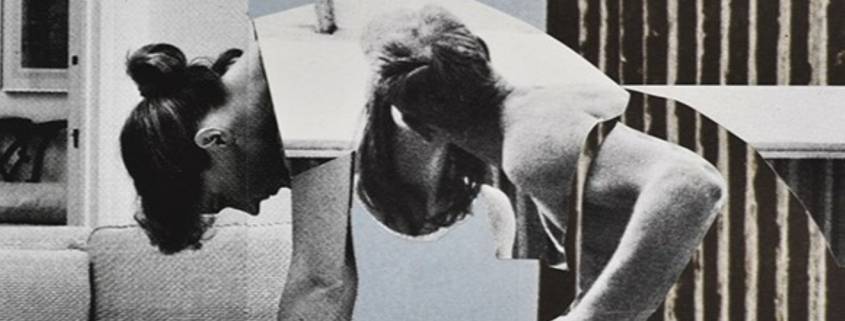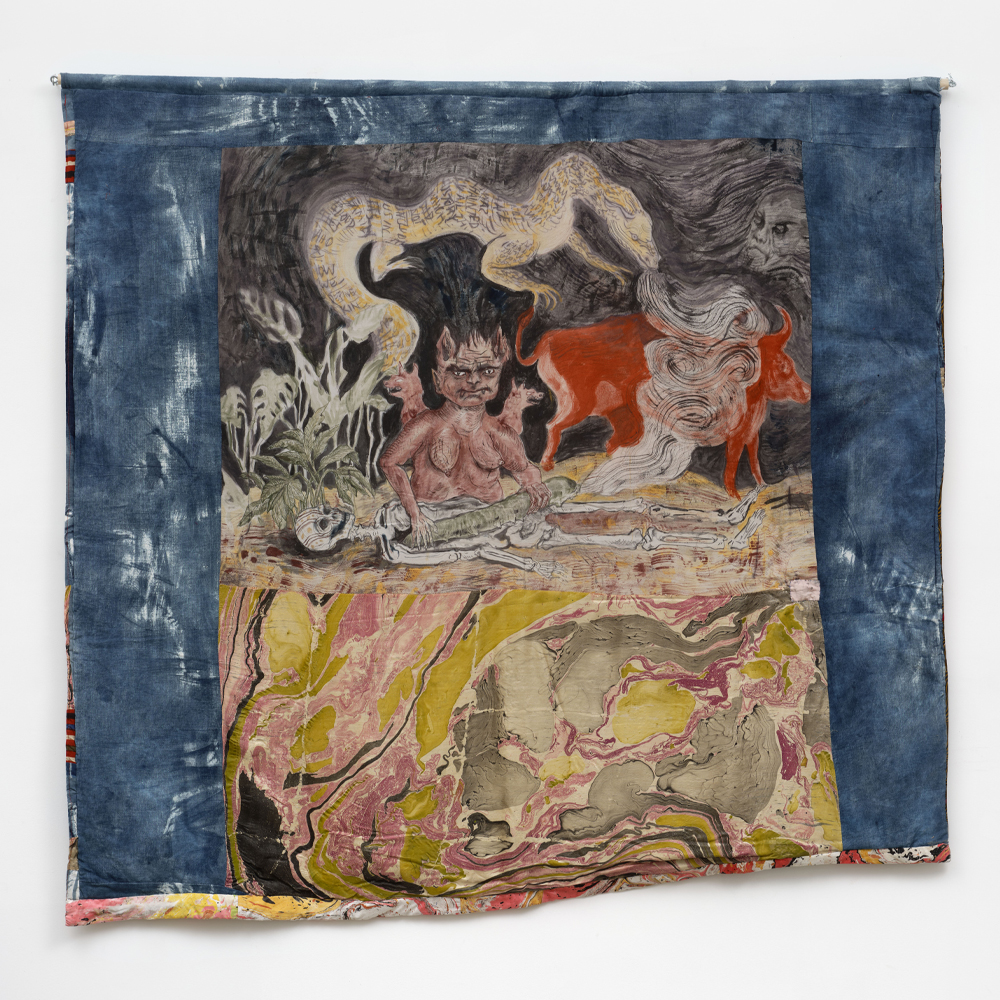

Lillian O’Neil, The place we dissolve, 2023. Courtesy: the artist, The Commercial, Sydney, and UNSW Galleries, Sydney.
Lillian O’Neil makes collages about the human condition, using found imagery from pre‐digital books and magazines to short-circuit visual information, with bodies taking on peculiar hybrid characteristics, surfaces merging with print textures, and the junctures between body, architecture, day, night, earth and sky all disintegrating.
O’Neil’s new body of large-format collages considers ideas about the self and a multiplicity of selves, or split selves, experienced during matrescence, a term coined by anthropologist Dana Raphael to describe the time of mother-becoming. A sense of unrest and overstimulation characterises this physical, hormonal, and emotional period. While O’Neil isn’t interested in illustrating motherhood in a literal sense, her experiences of having two children during lockdown periods in rural Victoria inform her approach to imagining the body and the psychic space it inhabits during this period.
The exhibition title comes from Annie Ernaux’s book Les Années (The Years), 2008. The writer uses descriptions of photographs to frame an account of her life and place with the larger narrative of French history and culture. Ernaux writes: “The distance that separates past from present can be measured, perhaps, by the light that spills across the ground between shadows, slips over faces, outlines the folds of a dress—by the twilight clarity of a black-and-white photo, no matter what time it is taken.”
Follow this artist
Sign up to receive the latest updates on this artist including exhibitions, VIP previews, landmark events, news and milestones.



